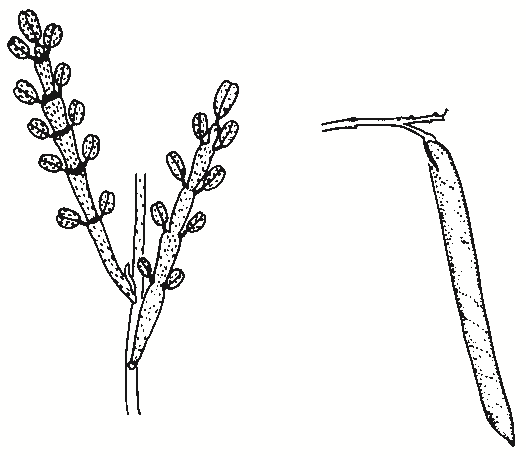Family:
Fabaceae
Indigofera adesmiifolia
Tick Indigo
(syn. I. australis var. signata, I. australis var. platypoda)
Other Names: Leafless Indigo
First Nations Name(s):

Name Origin:
Indigofera — neo-Latin for indigo-bearing.
adesmiifolia — leaves similar to plants in Adesmia genus.
Regional Subspecies:
Occurrence:
Regional:
Noted from drier areas to the west to higher rainfall areas to the east, including: Long Plain- West Hume; Majors Creek; Deadmans-Bungowannah-Long Flat; Burrumbuttock-West Hume; Bowna-Jindera; Walla Walla; Yambla; Scent Bottle-Serpentine & Upper Yarra Yarra; Paddy’s River-Burra Valley; Maragle; The Rock-Henty-Milbrulong; Brookong and Lower Sandy. Probably more widespread prior to grazing pressures.
Australia:
Qld, NSW, Vic.
Habitat:
Rocky places, mostly on volcanic soils. Woodland, especially on ranges and slopes.
Habit:
Small shrub to 1.5 m high with leaves up to 6.5 cm long and leaflets up to 5 mm long.
Site Preference:
Well-drained soil in semi-shade. Tolerates moderately heavy frosts.
Flowering:
Rose-pink, late winter-spring. Short flower sprays.
Seed Collection:
Mid Nov to early Feb. Monitor closely as seeds shed immediately or very soon after maturity. Ensure collection by securing nylon stockings or paper bags to fruiting branches after flowering.
Propagation:
From scarified seed or cuttings, which strike readily. Pour boiling or very hot water over seeds and soak until water cools. Dry to prevent rotting and sow. Germination takes 3-4 weeks. Suitable for direct seeding in pots (2-3 seeds per pot).
Regeneration:
From seed, particularly after fire.
VALUES:
Shade & Shelter:
Useful low-level cover in windbreaks.
Land Protection:
Legume — improves soil fertility by ‘fixing’ nitrogen.
Wildlife:
Excellent habitat. Flowers are a pollen and nectar source for many native insects, including bees and wasps. Food for butterfly caterpillars.
Ornamental:
Attractive ornamental for gardens. Prune from early age to promote bushiness and prevent straggliness.
